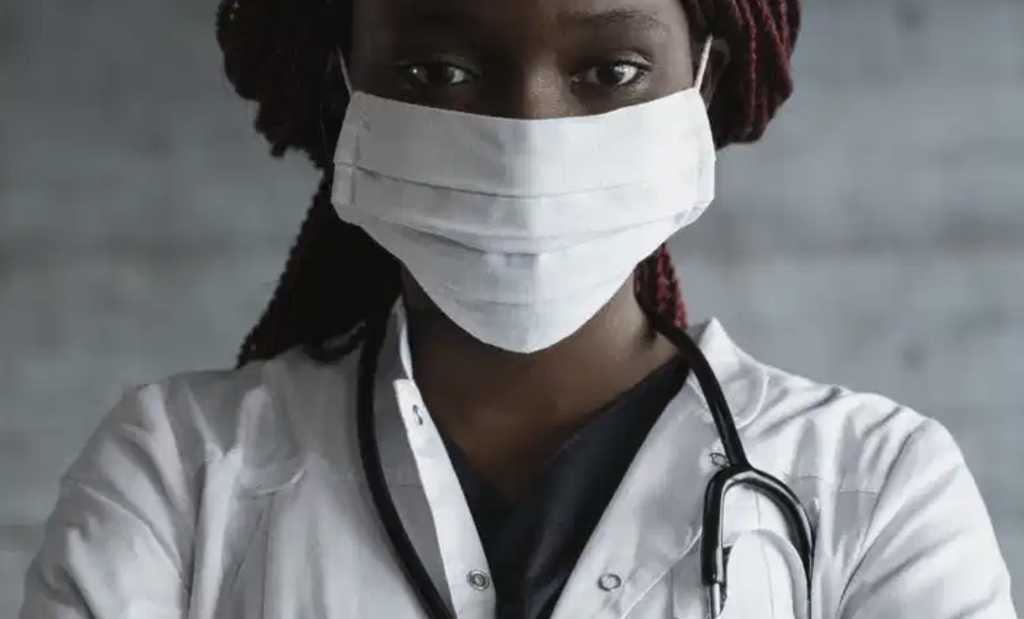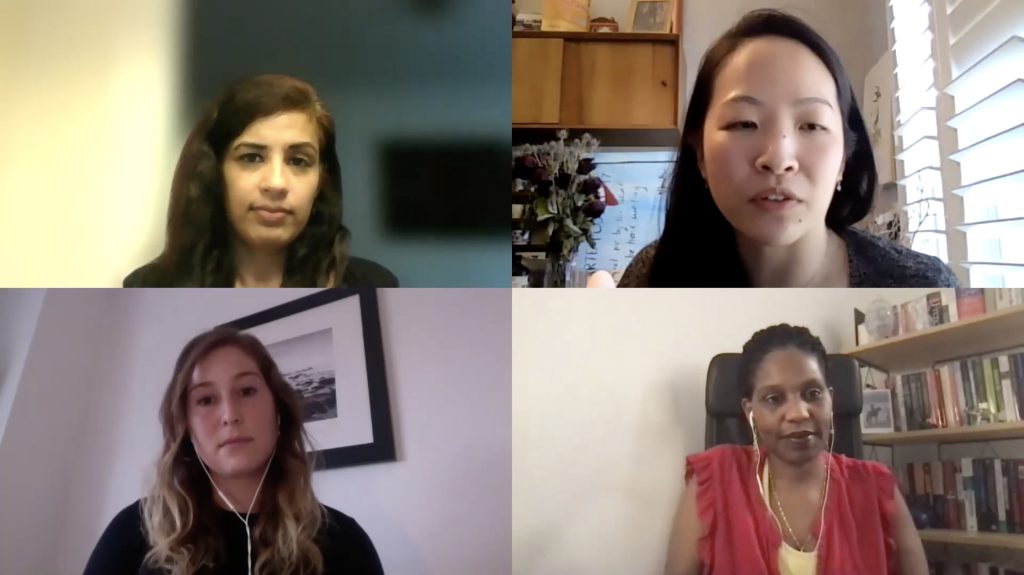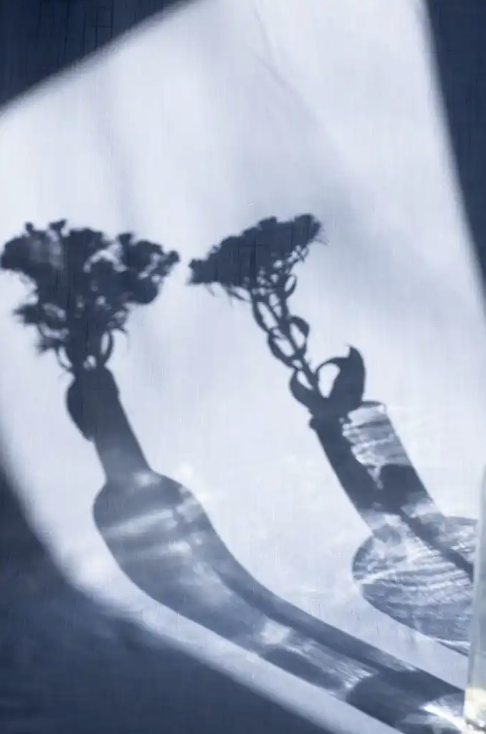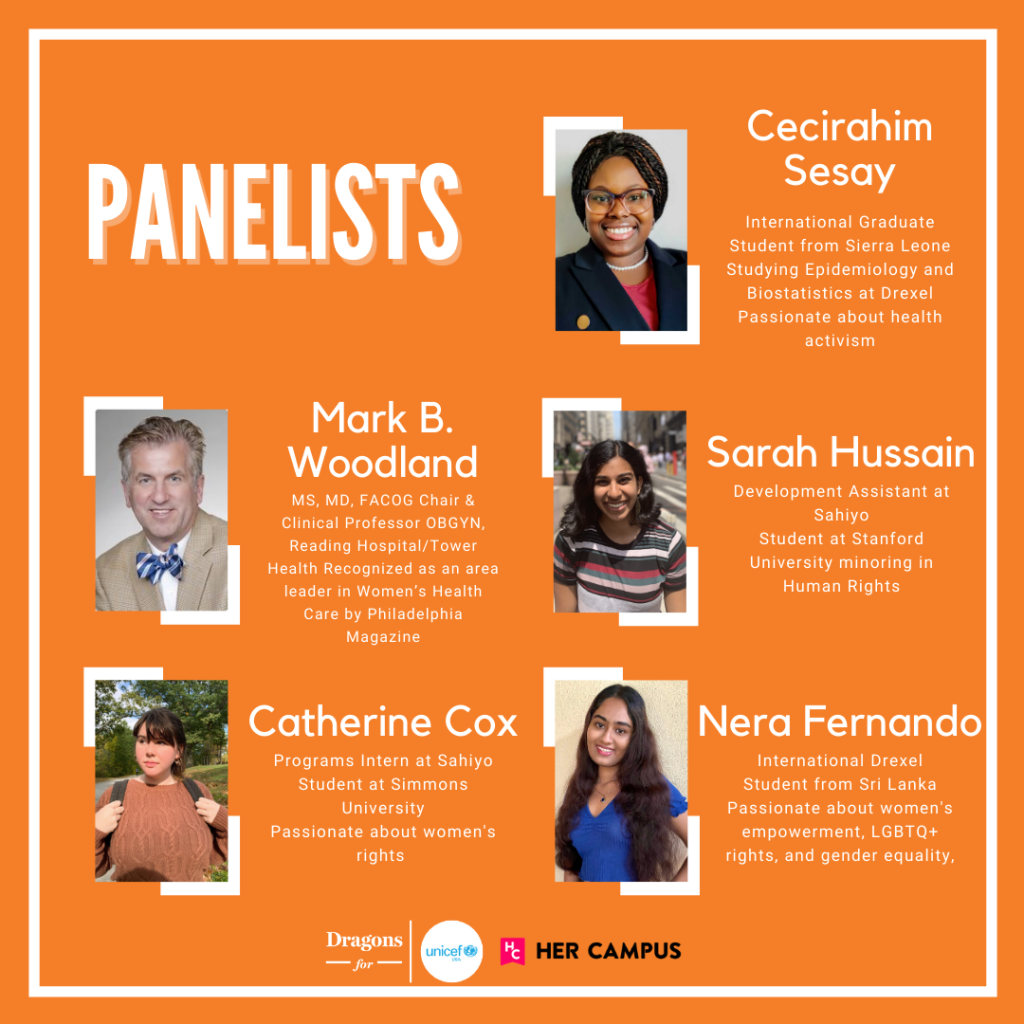Mutilation or enhancement: A researcher’s argument for respectful terminology on genital cutting

By Brian D. Earp I have published several papers on the ethics of medically unnecessary genital cutting practices affecting children of all sexes and genders. When my writing touches on the sub-set of these practices that affect persons with characteristically female sex-typed genitals, I have received some pushback for using the term female genital cutting (FGC) rather than female genital mutilation (FGM). An instance of such pushback came from a respected colleague in response to a paper of mine in Archives of Sexual Behavior, in which I argue against the use of ‘mutilation’ in certain contexts, as there is evidence that such stigmatizing language may have adverse effects on the very people who are meant to be helped. Given that this terminological issue is likely to keep coming up, I thought I would share parts of the reply I wrote to my colleague. I hope it can shed some light on at least one plausible way of thinking about such matters. My colleague argued that my use of ‘FGC’ rather than ‘FGM’ is disrespectful because it goes against the recommendation of the 2005 Bamako Declaration adopted by the Inter-African Committee (IAC) on Traditional Practices Affecting the Health of Women and Children. ——— On the matter of disrespect. I have had many conversations with women who consider themselves circumcised, rather than mutilated, and even if they agree that medically unnecessary genital cutting should not be performed on persons who are incapable of consenting, primarily children, they insist that it is harmful, stigmatizing, and paternalistic for others to simply define their own modified genitals as mutilated (a term that implies disfigurement or even an intent to cause harm). They explain that their loving parents, however misguided, did not intend to cause them net harm, just as, for example, Jewish parents who authorize that their sons be circumcised do not intend to harm them, but rather, take an action that is sincerely believed to appropriately integrate the child into an ancestral community. They recognize that, in their own communities, both male and female genital cutting practices are widely seen as improving the genitalia, including aesthetically, which is contrary to the very notion of mutilation. I may not agree with that interpretation myself, but it is not my position to tell these women (or their brothers) that their altered genitals are ugly or disfigured rather than, as they see it, aesthetically (or in some cases, culturally or religiously) improved. I will ask: Were these leaders democratically elected to express the considered opinions of their constituents, or were these leaders self-appointed? At the very least, they cannot have been authorized to speak on behalf of countless Southeast Asian or Middle Eastern women who have been affected by ritual forms of female genital cutting. In any event, I face a choice. I can disagree with the conclusion of these African leaders who seem to feel qualified to speak on behalf of millions of other women, including non-African women, and impose an entirely negative and stigmatizing interpretation of all of their altered genitalia regardless of how those women see their own bodies. Or I can show respect to those women who have shared their stories with me, as well as all the women in various reports and testimonies who have expressed strong objections to the term ‘mutilation’ being forced on them, and who would simply like to have the room to be able to evaluate and describe their own genitals as they see fit. One woman explained her feelings: “In my opinion, the word ‘mutilation’ used in reference to [what happened to me] is a degrading and disempowering term that strips women of their dignity and self-worth. Basically, it is a label that has the power to negatively influence one’s self-identity. If you understand labelling theory you will understand how damaging/influential a term or classification can be to an individual.” She continued with her experience: “Having just about survived my ordeal of forced body alteration I was very aware of the violation to my body. However, the introduction of the term ‘mutilation’ into my consciousness affected me mentally and physically. It made me view myself as an ugly, mutilated, and frowned-upon member of society. There started my journey of self-hate, which presented itself in many forms, including bulimia and social anxiety, to name but a few. To be called the ‘mutilated’ girl by health professionals stripped me of any dignity and covered me in shame on numerous occasions. Thankfully, I no longer see myself as a victim or survivor of ‘FGM’ – I refuse to allow that term to take away my power or to define who I am.” Faced with the choice between respectfully disagreeing with the analysis and conclusion of a group of leaders whose qualification to speak on behalf of others I do not know, versus showing respect to those women, such as the one quoted above, who have asked for the right to determine their own victim status (including whether they regard their genitals as mutilated or otherwise), I choose the latter. Referring to “the event” and “the torture” is using singular language to refer to a plurality of quite different events carried out in different ways by different groups for different reasons. As you know, the World Health Organization (WHO) uses the term FGM to refer to a dozen or more practices, ranging from nicking of the clitoral hood, which does not remove tissue. In many communities, for example in Malaysia, it’s often done by a doctor with sterile equipment and pain control, through to excision of the external clitoris with a rusty implement and no pain control followed by infibulation, as occurs in some rural parts of Northeast Africa, for example. It is entirely accurate to say that all of those quite different interventions are medically unnecessary acts of genital cutting; and I argue that all of them are morally impermissible if carried out on a non-consenting person. I have written about labiaplasty, a common procedure in Western countries. I
Female genital cutting: Underacknowledged and underrecognized in the United States

By Cate Cox On June 3rd, 2021 Sahiyo partnered with the Connecticut Trauma and Gender Learning Collaborative and The George Washington University associate professor Dr. Karen McDonnell to hold a training for healthcare professionals who may interact with survivors of female genital cutting (FGC). The Connecticut Trauma and Gender Learning Collaborative focuses on trauma-informed and gender-responsive treatment. Many of the participants are actively providing clinical services. This presentation explored FGC in the United States and resources available for clinicians and other front-line professionals who may come in contact with women impacted by FGC, as well as how they can provide trauma-informed care. In particular, our training highlighted The George Washington University’s Women and FGM/C Toolkit as a tool to help further their education and to become better prepared to support survivors in their journey toward healing. Alongside the GW Women and FGM/C Toolkit, we highlighted Sahiyo resources such as the Trauma Blog Series by Joanna Vergoth, founder and executive director of forma, among others. During the training, we also used some of our Voices to End FGM/C videos to highlight the lack of education on how to support survivors of FGC in the medical field and the imperative practitioners have to fill in those gaps to better support all women. At the end of the presentation many of the attendees said they didn’t realize how widespread the problem of FGC is in the U.S. They expressed that they are grateful to have had the opportunity to learn how to better support their patients. Overall, trainings such as this one are crucial to help providers learn how to best support survivors and to help expand the understanding that FGC is a problem in the U.S. that we all need to be involved in addressing.
Female genital cutting: A poem

By Zainab Khambata Country of Residence: India As the blade pierced through my skin, All I could feel was pain. I looked into my mom’s eyes, And she shrugged helplessly in vain. I was yet another girl, Subjected to female genital cutting. As a mere child of seven, I did not contest, I wasn’t even aware, That all my dignity as well as my rights, Were stripped from me bare. “It is done in the name of religion,” they said. And it is this ideology I dread. It is done to curb a woman’s desires, To subdue her voice and her fire. My grandmother said “It’s all right, all girls must go through this in their life.” Why has society rendered women unaware? To the point where they do not know and do not even care. They torment innocent children, With everlasting scars, But yet this practice they refuse to stop, Fearing from society’s eyes they will drop. When will this age-old tradition come to an end? So that without emotional trauma, The rest of their lives little girls can spend. It is time to speak up about this, And make people aware, It’s time to show that we care.
Using purity as a means to control women through Christianity and female genital cutting

By Nicole Mitchell Many communities struggle to accept female sexuality even in today’s modern world. While it is common to see female sexuality in pop-culture, this doesn’t necessarily reflect a universal acceptance. Frequently, a woman’s value is tied to her “purity” or virginity. This prejudice manifests in obvious ways, such as female genital cutting (FGC), and in more subtle ways like teaching women and girls that their worth is tied to their abstinence. These methods of oppression are also not mutually exclusive and occur in many communities around the world including the Western, Christian community. Evangelical America I grew up as a minister’s daughter and one of eight children with five sisters and two brothers. My dad was a minister at an evangelical church in Boston, Massachusetts. While the evangelical movement is considered to be one of the more progressive, modern branches of Christianity, we still subscribed to such beliefs that a woman ought to be submissive to her husband by honoring him as head of the household, church and state. If you were to ask my dad and other fellow religious leaders their opinions on this now, they would probably avoid the question. Over the years, evangelical Christians have softened their voices, particularly in regard to the role of women and the LGBTQ community. This may be attributed to the growing resistance from millennials and younger generations against exclusive ideologies. As a young girl, I was taught that men and women had different, God-given strengths. Examples of female strength focused on traits such as empathy, caring and kindness, whereas male strengths included leadership, power and physical prowess. While men and women could embody both traits, such as being an empathetic leader — I was taught that a woman could never lead over a man. Essentially, the message was that women aren’t really leaders; they can just help organize other women. When I questioned this, I would often have scripture cited to me: “Let a woman learn quietly with all submissiveness. I do not permit a woman to teach or to exercise authority over a man; rather, she is to remain quiet” (1 Timothy 2:11-12). Even more blatantly, “Wives, submit to your own husbands, as to the Lord” (Ephesians 5:22-24). This belief was demonstrated in both my dad’s church I attended and in the larger, global ministry we were a part of, as there were no female head pastors. Women could be guest speakers during services, but never the head of the church. This idea that certain personality traits are reserved for specific genders, specifically leadership and power belonging to men, highlights a deeper division in how communities view a woman’s overall personhood and more specifically, her sexuality. The concept of a person being both spiritual and sexual was never discussed in my upbringing. As a woman, I felt that acknowledging sexuality or sexual desires was in direct conflict with being spiritual; one simply could not be both at the same time. Consummating a marriage was fine, but admitting to having sexual urges was considered not godly (i.e., Christian). Leaders and parents exhibited different attitudes in the way a boy versus a girl would be treated when admitting to participating in sexual acts or behavior. “Boys will be boys,” was the typical attitude when a young man admitted to sexual behavior before marriage. However, if a girl was promiscuous, within the church and my community, there was a substantial attitude of judgement toward her as if she was now deemed unclean, even sometimes suggesting that she was at fault for the boys “mistake” because of the clothes she wore or the way she carried herself. This wasn’t a direct principle preached in sermons; but it demonstrated the way purity and modesty were so heavily emphasized in my childhood. I know my brothers did not experience this emphasis, certainly not to the level I did. For example, every year my mom would take a few of my sisters and I to a women-only conference in New York called PureLife. Women from our global ministry would speak on a variety of topics with a focus on maintaining purity and a “clean spirit” with God. I remember the shame surrounding impurity was a heavy and distinct feeling. It is possible to surmise that when an idea is subtle or silent, it becomes more powerful because it is more difficult to challenge. This purity prejudice was further backed by scripture. One of the most fundamental stories in the Bible about Adam and Eve, instructs that mankind was doomed due to a woman pursuing knowledge. Eve’s interest in the tree of knowledge is portrayed as her ultimate downfall. Much like I would have been disgraced for exploring my sexuality at a young age, Eve was banished from heaven for pursuing knowledge according to the story. One could even surmise that the Bible is alluding to sexuality, not knowledge, given the level of shame Eve received. This idea that a woman should suppress her knowledge or sexuality is seen clearly in another important story in the Bible. The birth of Jesus Christ comes quite literally from a virgin mother. In theory, this teaches that the “ideal woman” would never explore her sexuality. After all, the “savior of the world” came from a “sexless” and “pure” woman. A woman pursuing her own sexuality or knowledge is not encouraged, but rather a sin. The Bible as it was written by men over time has a unique ability to reward submissive behavior, while inciting fear in women who might explore their own body. As a young Christian girl, it was clear my role model was to be Mary and not curious Eve. Again, while these principles were not overtly stated in the church, they were powerful, nonetheless. Female genital cutting The continuation of female genital cutting (FGC) in the modern world is further evidence of the oppressive undercurrent that defines a woman’s value based on her perceived purity. FGC is often practiced as a way to curb female sexual desires by preventing
Webinar: Female genital cutting is an under-recognized form of gender-based violence in the U.S.

By Cate Cox On April 15th, Sahiyo partnered with the U.S. End FGM/C Network and the Asian Pacific Institute on Gender-Based Violence (APIGBV) for our webinar: Female Genital Mutilation/Cutting (FGM/C): An Under-Recognized Form of Gender-Based Violence (GBV) in the Unites States. This webinar was the second in a series that explored the intersection of FGM/C and GBV; how COVID-19 has impacted the prevalence of FGM/C; and how providers can offer better care to survivors. FGM/C is a reality for many women and girls across different communities in the United States. Yet, for centuries, FGM/C has remained a hidden practice. It’s often practiced by women on other females; and girls are raised to believe they must remain silent about what they underwent. Silence is an inherent part of this type of gender-based violence that can lead to lifelong physical and emotional health consequences. At the core of providing better prevention, protection, health, and social support services for women and girls are stronger data, enhanced research, and community engagement. Sahiyo co-founder Mariya Taher and members from the U.S. End FGM/C Network and APIGBV began this event by exploring the background of FGM/C and its global prevalence. The speakers dove into the history of FGM/C in the U.S., including legislative history and that of the practice itself. Then our speakers helped the audience make the broader connection between gender-based violence and female genital cutting. The audience, representing mostly Asian American Pacific Islander (AAPI) domestic violence/sexual assault organizations, identified many similarities including cultures of secrecy and silencing, shame felt by survivors, FGM/C as source of generational trauma, and FGM/C as a form of power and control over women. We also explored the lessons from the Ebola crisis in West Africa that can help us support women and girls during the COVID-19 crisis. Finally, we compiled a list of resources for service providers to further educate themselves on how to both adequately and ethically provide their services to survivors. At the end of the event, our speakers also answered the audience’s questions about their work and experience. Like many Sahiyo events, we also utilized the Voices to End FGM/C films throughout the presentation to help contextualize what the audience was learning and help them understand the stories behind the statistics. These films center the voices of activists and survivors advocating for an end to the practice. While data is crucial in order for us to grasp the scope of the issue, Sahiyo believes that storytelling can be just as powerful a tool in educating people and championing the abandonment of this practice. Female Genital Mutilation/Cutting: An Under-Recognized form of Gender-Based Violence in the U.S. as a webinar was a continuation of the important conversation around FGM/C and GBV that also provided the audience with tools they could use in the real work to better support survivors. Our guests had the chance to explore the intervention and community engagement efforts occurring in this country to support survivors, how COVID-19 has impacted FGM/C and GBV, and how they themselves could help prevent future generations from experiencing FGM/C. It also showcased the amazing work, everyone, at Sahiyo, APIGBV, and the U.S. End FGM/C Network is doing in their capacity to advocate for women’s rights and call for the abandonment of the practice of FGM/C. If you were unable to attend this event you can find more information here. Watch the recording of this event. To learn more about APIGBV and the US End FGM/C Network, please visit their websites below: www.api-gbv.org https://endfgmnetwork.org/ Additionally, if you are are service provider you can find some of the resources mentioned at this event below: Bridging Refugee Youth and Children’s Services (BRYCS) – Health Practitioners Guide to Providing Culturally Competent Care for Women and Girls Affected by Female Genital Cutting Dahlia Project – Female Genital Trauma: Guidelines for Working Therapeutically with Survivors of Female Genital Mutilation AHA Foundation – Training Curriculum for Law Enforcement, Educators, and Service Providers
Women should not be harmed because of societal norms

By Sakshi Rajani Age: 17 Country: India Female genital cutting (FGC): the term sounded ruthless the first time I heard it. It was not long ago that I was introduced to this term. While going through my Instagram feed, I read a story about a law student who was spreading awareness about FGC, and I was clueless about what it was. Immediately I searched this issue online and learned how serious it was. Then, I pondered why I hadn’t known about it earlier. Why had no one around me talked about it? Upon researching it further, I came to know how deeply rooted this problem was in communities and cultures. My will to do something to end it became stronger. I looked for organisations working to end FGC and came across Sahiyo. I soon joined the organisation. The first time I spoke about FGC to my friends they said, “What is that?” I wasn’t surprised by their reaction because I, too, was unfamiliar with it. I asked them to research it on their own, and then I explained more about the harms. I told them the World Health Organization and the United Nations declared FGC a human rights violation. Then I introduced them to the groundbreaking Mumkin app created by two co-founders of Sahiyo, Priya Goswami and Aarefa Johari, where my friends could learn more valuable information about this issue. What are the hurdles in encouraging abandonment of or ending FGC? FGC is also often seen as a necessary ritual for initiation into womanhood and can be linked to cultural ideals of femininity, purity and modesty. A strong incentive to continue the practice is family pressure to adhere to conventional social norms. Women who break from this social norm can face condemnation, abuse and rejection from family or community members. Patriarchal society can help perpetuate it generation after generation. Female genital cutting should stop immediately, as a woman should have full rights over her body and no woman should be harmed because of societal norms and expectations. I am now an advocate to make sure FGC ends.
Sahiyo staff join panel on FGM/C with Drexel University faculty and students

On March 29th, Sahiyo’s Development Assistant Sarrah Hussain and Programs Intern Catherine Cox were invited to speak at a panel discussion on female genital mutilation/ cutting (FGM/C). Hosted in partnership with the UNICEF Unite Club at Drexel University, this panel featured three other speakers: Mark Woodland, M.D., activist Cecirahim Sesay, and activist Nera Fernando. Dr. Woodland is a professor and chair of the Department of Obstetrics and Gynecology at Drexel University College of Medicine. He serves on several committees and advisory groups at the Institute for Women’s Health and Leadership. Fernando is a student at Drexel University from Sri Lanka who offered her insight from a social perspective, exploring the underlying causes of FGM/C, and what it is like living in a community where FGM/C is the norm. Finally, Sesay is also a student at Drexel University and a health-equity activist who offered her personal insight into the underlying causes of the FGM/C and community norms. Combined, this panel of amazing speakers explored the health consequences of FGM/C, living in practicing communities, and how people can become better activists and allies in empowering communities to end the practice. Dr. Woodland explained the medical effects of FGM/C and its global prevalence. Next, Sesay and Fernando used their personal stories to explore the social norms that underpin the practice. Finally, Hussain and Cox from Sahiyo explored Sahiyo’s work and activism in the past, giving the audience a framework for their own activism. They highlighted the concrete steps everyone can take in their day-to-day lives to become better advocates in ending FGM/C. Panelists took audience questions that ranged from the history of law in the United States around the issue, the role that culture plays, and how the people in the audience can take concrete steps toward activism. Overall, the panel was an eye-opening exploration of the many issues and concepts surrounding FGM/C and the movement to abandon the practice. If you are interested in having a member of Sahiyo speak at an event at your institution, please email our team: info@sahiyo.com. You can also fill out our request for an outreach presentation form at http://sahiyo.org/programs/community-outreach.html.
Reflection on Addressing FGC in the Clinic: A Dialogue between Survivors and Healthcare Professionals

By Sandra Yu On December 8th, 2020, Sahiyo hosted a webinar featuring several health professionals and survivors of female genital cutting (FGC) to discuss the necessity for trauma-informed care and cultural competency. The event was an eye-opening and invigorating conversation as the panelists discussed the failures of the current medical system and necessary next steps to improve systemic care for survivors of violence. Renee Bergstrom and Sarata Kande, two outspoken advocates against FGC, provided unique and moving perspectives about how cultural competency and vulnerability are key to providing better care. The juxtaposition between their Voices to End FGM/C videos and their spoken statements on the panel about their past experiences with healthcare professionals was truly powerful. “Once it’s done to you, you are forbidden to ever mention it to anybody,” Kande said. “But when you share your story, it feels good.” In response, Deborah Ottenheimer, M.D., detailed how she identifies and speaks with survivors of FGC in an inclusive, vulnerable, and caring manner. Karen McDonnell, Ph.D., a public health specialist and creator of the The George Washington University FGM Toolkit, also addressed the critical need for providers to learn about FGC from a public health perspective, expanding on the treatment of FGC as a subsector of gender-based violence. Mariam Sabir, a Sahiyo volunteer and 4th-year medical student, gave an unsettling glimpse into the current state of medical education surrounding FGC as she described her interactions with peers and faculty on the topic. The central theme that arose was the importance of communication, whether it’s between healthcare providers, communities, the general public, or patient-doctor interactions. McDonnell speaks to the creation and normalization of the language used to describe genitalia. Having the right vocabulary to communicate about female genitalia is the first step to having genuine conversations about FGC. Communication between a patient and their doctor is even more crucial for building trust. Knowledge is not enough to make a person feel safe and comfortable. Bergstrom and Kande alluded to their individual experiences grappling with healthcare providers that fail to embrace vulnerability. Building trust and allowing for vulnerability in the clinic are learned skills that are often overlooked in medical education. The culture of silence surrounding the practice of FGC is pervasive, but we are moving toward a future where silence does not need to be the norm, especially in the clinic where trust is paramount to care. Watch the recording of this event here. Read the transcript here.
Upcoming Webinar: Addressing Female Genital Cutting in the Clinic

HealBy Sandra Yu Female genital cutting (FGC) is an often overlooked issue in medical curriculums, and medical care for survivors is rarely a topic of discussion. As part of the 16 Days of Activism against gender-based violence, Sahiyo is hosting a webinar to inform individuals about the necessity for trauma-informed care for survivors of female genital cutting. Join Sahiyo for “FGC In the Clinic: A Dialogue between Survivors and Healthcare Professionals” at 6 p.m. EST on Tuesday, December 8th. This panel discussion aims to gather the perspectives of clinicians and survivors as they discuss their in-clinic experiences. Renee Bergstrom, EdD, and Sarata Kande will be speaking about their experiences in connection to receiving medical care related to FGC. Karen McDonnell, PhD, Dr. Margaret Dow, and Dr. Deborah Ottenheimer will respond and discuss the current state of healthcare for survivors of gender-based violence. Mariam Sabir, a fourth-year medical student, will speak about her advocacy for supporting survivors in healthcare settings. Zahra Qaiyumi and Sandra Yu will moderate. Renee Bergstrom, EdD works toward ending female genital mutilation/cutting (FGM/C) by sharing her survivor story as a white, Midwest American. She is a retired patient educator who now focuses her energy on the art of weaving. Sarata Kande is a student, entrepreneur and youth advocate for inter-African committee. She is a survivor of FGC and loves to share her story. She dedicates her time as an advocate and an interpreter. Margaret Dow, MD is a laborist at Mayo clinic, where she serves as Clerkship Director. She works with medical students, peers, and the community in education and advocacy for survivors of FGM/C and in trauma-informed care practices, as well as practices that promote equity in healthcare. Deborah Ottenheimer, MD is the Director of the Women’s Holistic Health Initiative at Harlem United/ URAM, Nest Community Health Center where she is focused on immigrant health as well as the development and implementation of a multispecialty medical service for women and girls affected by FGM/C. In addition to her clinical practice, Dr. Ottenheimer spends a significant portion of her professional time assisting asylum-seeking women who have suffered human rights violations. Dr. Ottenheimer is an active member of Physicians for Human Rights, and serves as faculty at the Human Rights Program at the Icahn School of Medicine at Mount Sinai, the Weill Cornell Clinic for Human Rights, and the CUNY School of Medicine Human Rights Collaborative aiding survivors Gender Based Violence, including female genital cutting, domestic violence, sexual violence and human trafficking in their applications for asylum. She has published and lectured extensively on human rights violations against women, with a focus on FGC. She has also worked in Haiti, Rwanda, and Democratic Republic of Congo, helping to improve the health and lives of women in low resource settings. Karen McDonnell, PhD is a public health program evaluation and implementation specialist with over 15 years of experience working with community groups, public health agencies, and health care systems both locally and globally to ensure the health and well-being of women and children. McDonnell’s expertise lies in using mixed methods to look at complex public health issues and programs. Her most recent work is leading a team to evaluate gender-based violence in immigrant communities, development, and testing of a community-centered FGM/C prevention project, evaluating the National Domestic Violence Hotline/loveisrespect Helpline and evaluating multi-systems changes in the Clinical Translational Science Institute with Children’s National and The George Washington University. Mariam Sabir is a fourth-year medical school student at the American University of the Caribbean. She aspires to become a family physician that provides comprehensive care. She became an avid Sahiyo supporter when she discovered how prevalent female genital cutting is, particularly in her very own community. While rotating through different fields of medicine such as obstetrics and gynecology, psychiatry, pediatrics and family medicine, she discovered her passion for educating health care professionals on how to provide culturally sensitive care for women who have undergone FGC. Zahra Qaiyumi completed her undergraduate education at The University of Maryland, studying physiology, neurobiology, and Spanish. Afterward, she pursued a Master’s degree in Physiology at Georgetown University. She then moved to the Bay Area and participated in neurobehavioral research while working with adolescents diagnosed with ADHD at the University of California San Francisco’s Neuroscape Center. Currently, she is in her third year of medical school at the Frank H. Netter M.D. School of Medicine at Quinnipiac University. Sandra Yu is an undergraduate student at Vassar College studying biochemistry and philosophy. She is interested in public health policy and expanding womens’ healthcare access in underserved populations. She was drawn by Sahiyo’s mission to end FGM/C through powerful storytelling, and she hopes to contribute to Sahiyo’s platform to grow and empower the community. Register here: bit.ly/addressing-fgc-in-the-clinic Facebook updates: https://fb.me/e/3QaNwkvWE
Forced Clitoridectomies on Athletes

By Masuma Kothari (Several female athletes have been coerced to undergo partial clitoridectomies to participate in competitive sports. Read about female genital cutting (FGC) in sports here.) “Let me try to feel this, as if I was you. As a child I am embellished a rosy world of toyswhich could draw up to any passerby without a doubtwhat I am. I grow fast and in symphony my speed at running, too,adapts, I lean toward the world of athletics andfitness treats. I am changing, there are things happening to me,fine hair shows up where they never were,softer and fuller I feel,I start to menstruate. I definitely know what I am. My emotions attract me toward wonderful boys,They lure me into fantasies rolling up my eye. I definitely know what I am. All along I perform well, I score medalsafter medals, I get noticed with victory bells I get trained, I sit among the best runners,my mind shifts into a resilient achiever with thick endurance,representing every honour, I win all my fearsand I run like a cheetah after his dinner. I still definitely know what I am. What more evidence do you need,I may be giftedI may look testerone highbut how can you disregardall that I have? I am faced with a choice atthe time of my youththe time when I am bleedingto reach my dreams from rootSimply put, I have more couragethan being wisesoI sit under the knifeAnd now you tell me if that is nice?”
